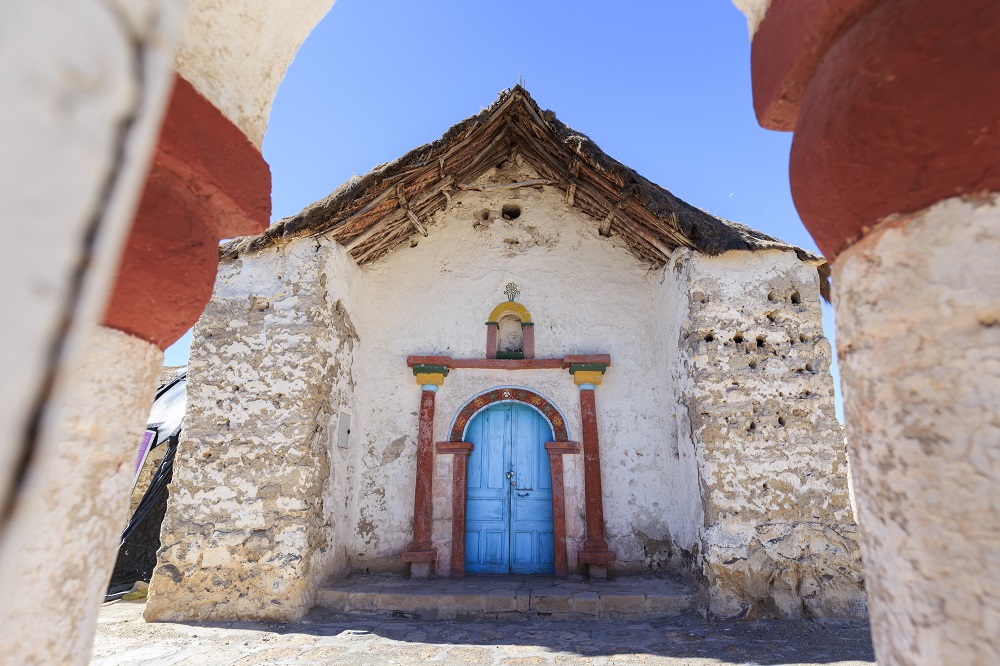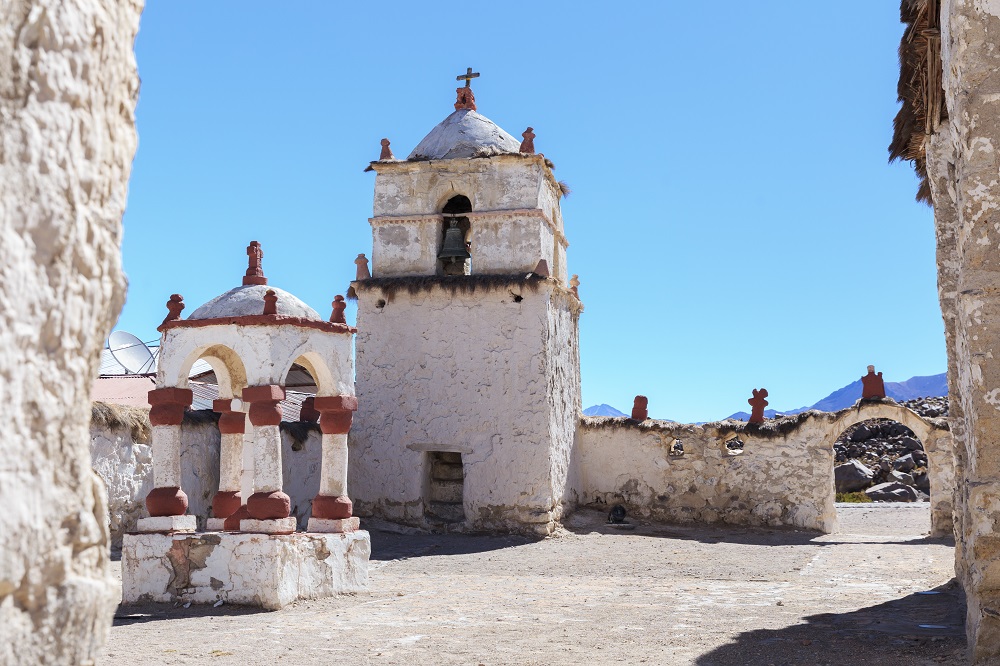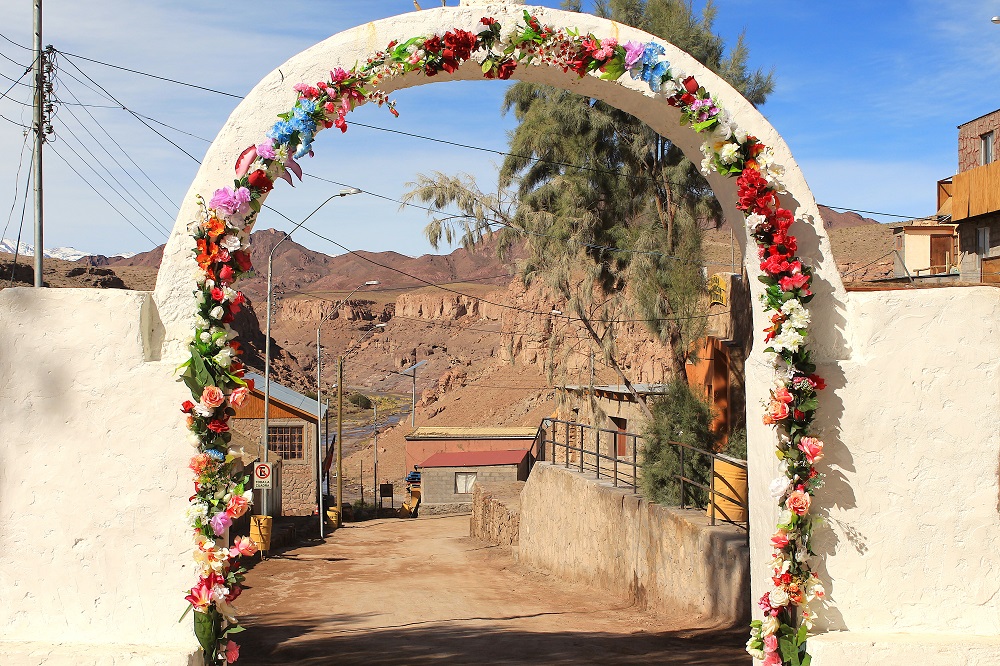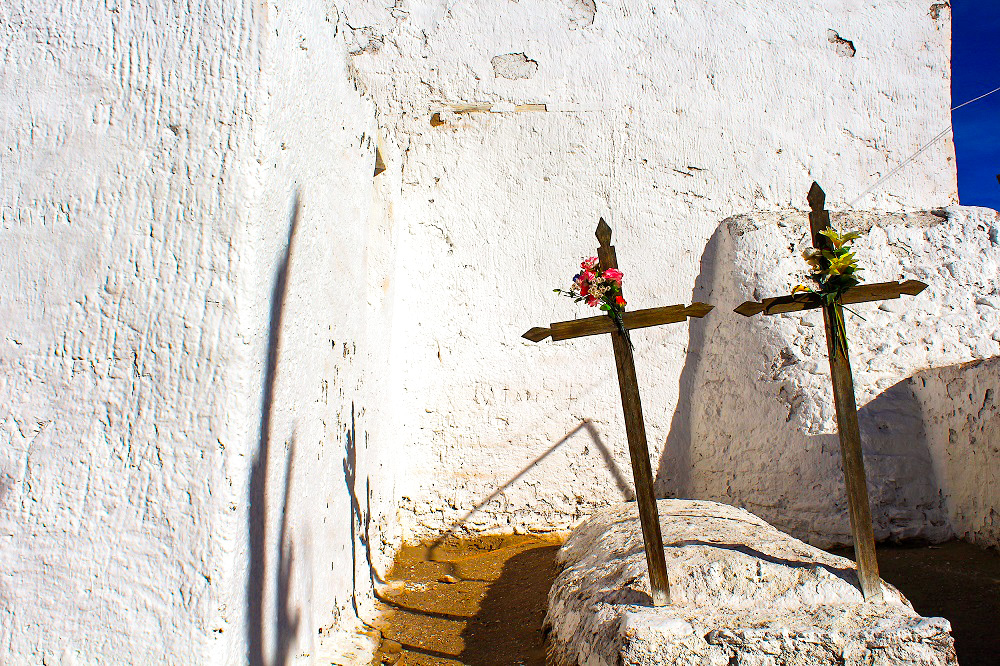People and Culture
The Atacama Desert is characterized by being the driest in the world. Research has concluded that this territory was under the sea more than a hundred million years ago. Today, we find a silent and often inhospitable landscape between volcanoes, salt flats, wetlands and lagoons. Travel through Chile! and discover the towns of the Chilean Altiplano.
We invite you to live an adventure, which in addition to knowing imposing landscapes, you will find lost towns in the most remote part of Chile.

Arica and Parinacota: Ruta de las Misiones and Lauca National Park
From the city of eternal spring, Arica, you can start the trip to the Chilean highlands. Prepare by drinking plenty of water or drinking coca leaf tea is essential before leaving. The puna is a problem and if we do not take precautions, we will run the risk of feeling bad. If you're good to go, go ahead!
More than 30 Andean churches are linked by the same route. Some call it the "sacred route" for its great architectural, cultural and historical wealth.
The Ruta de las Misiones, as we know it today, was the road that linked Potosí (Bolivia) with the port of Arica, from where all the ore found was shipped and sent to Spain. This route was always full of silver-laden animals and settlers who crossed by night and day. This is how the villages became places of welcome (to feed) and of rest. Then, small churches of stones, adobe and wild straw began to be built, which are typical materials of the highlands.

The churches were built in the 16th century. Many of them have been restored and today they are open for tourists. From the city of Arica, you can take a tour to know the towns of the Chilean highlands such as Poconchile, Socoroma, Putre, Visviri, Belén, Ticnamar and many others.
Along with the polulation of the Chilean highlands, we can observe the wonderful landscapes of the Chilean highlands: camelids feeding under the silence of this ecosystem, flamingos in the Salar de Surire, the Polloquere hot springs that deserve a stop to relax in its turquoise waters.
The route is crowned by Parinacota, a small Andean town located at more than 4 thousand meters above sea level that has had a lot of ethno-cultural relevance. It is a ceremonial town made up of uninhabited houses, which were later occupied only for the festivities.

How not to mention Lauca National Park, which if you want to explore it in depth, you will need at least 3 days.
The most attractive places are the Cocotani lagoons, the Chucuyo people, the archaeological sites and the hot springs, which are natural waters that are born from the wetlands with more than 30 degrees celsius. A must see in the landscape is Lake Chungará with the Payachatas mountains in the background.
If you are planning a trip, we recommend to visit this area during either fall or spring season, because of the rainy weather that occurs during summer due to a phenomena called Altiplanic winter, a time when the landscape is covered in snow.
Alto el Loa: The best kept secret in the Antofagasta Region
From Calama you can start the trip and end in Caspana. Another option is to depart from San Pedro de Atacama where sunrise tours depart to visit the Tatio Geysers and from there go down the route that connects Caspana and take the opposite direction.
If you have little time, we recommend you leave this tour for the last day, so that you arrive directly to Calama to take a return flight.

Alto el Loa National Reserve is a protected wild area. The peoples of the Chilean highlands in this sector of northern Chile are made up of communities of the Lican antay (Atacameña) and Quechua culture. Ancestral traditions, its terraced crops, camelid herding and religious celebrations are part of the daily life of this place. They are the ones who keep intact the patrimonial churches, the towns and the crops, as a heritage from previous generations.
Visit Chiu Chiu, an iconic desert town, whose church, San Francisco de Chiu Chiu, is considered the oldest preserved in Chile. It dates from 1540 and is a National Monument.
Later, you will find the Pucará de Lasana, defensive houses supported on the mountain. You can witness its narrow internal passageways and a great wall that surrounds these constructions.
Ayquina is another town in Alto el Loa, more silent and uninhabited than anywhere else in Chile! Who would think that this place is filled with colors, dances and processions in the famous carnival in honor of the Virgin of Guadalupe in the month of September? Every year more than 50 thousand tourists come from all over the world to witness this visual spectacle that begins with fireworks.

Finally, we arrive at Caspana, among huge ravines the houses are located. Silence fills the entire landscape, while in the distance the bells of the sheep are heard. Women in braids, straw hats and long colorful dresses walk with the herd. Children play and the flowers grow quietly in their gardens (then they are marketed in Calama). The adobe houses have colored crosses on their doors to ward off evil spirits.
There is so much to go actually, and we are only left with a small sample of the towns of the Chilean highlands.
We continue traveling through Chile!
